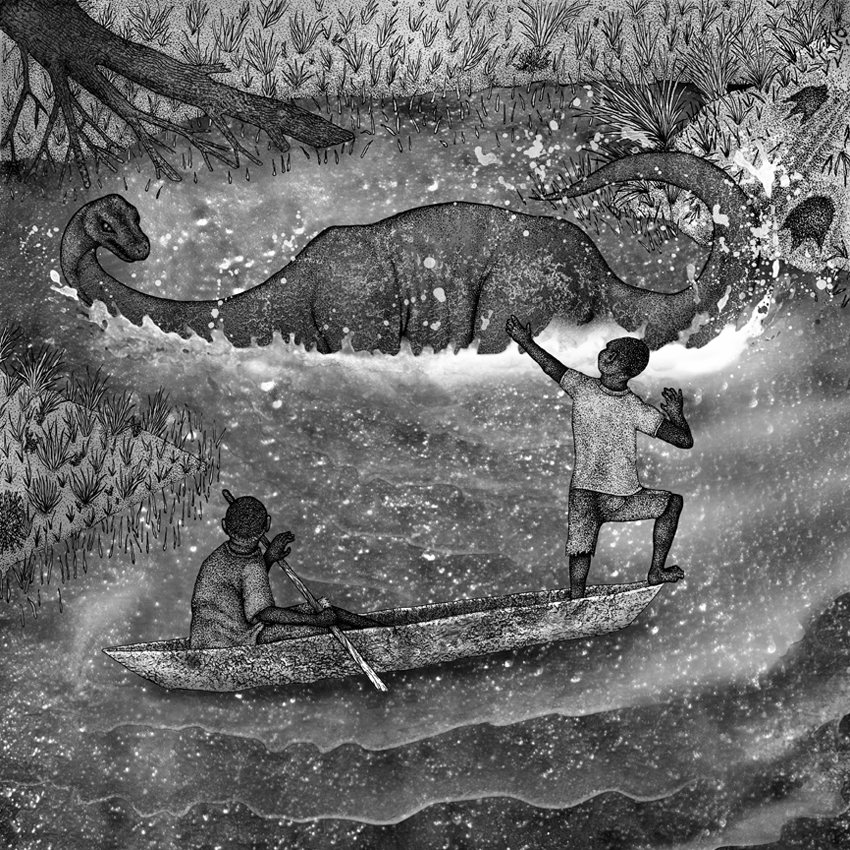
< < BACK TO GALLERY
AJ NORDHAGEN
Mokèlé-mbèmbé
Archival digital print with serigraphy
12'' x 12''
2016
Mokèlé-mbèmbé is a dinosaur-like creature that is said to inhabit certain waterways of the Congo and Cameroon. Its name is derived from the Lingala language, meaning “one who stops the flow of rivers.”
Encounters with these animals have been recorded as early as 1776, by both native people as well as visiting Western missionaries. They are most frequently described as having bodies similar to an elephant, but with a long tail and neck. The shape of the head is described as being small and reptilian, either snake or crocodile-like. Total body length is estimated to be 16 to 32 feet nose-to-tail, although some accounts from Cameroon report a total length upwards of 75 feet. Their skin ranges from gray to brown to copper-red in color. Witnesses have frequently identified illustrations of Apatosaurus as “Mokèlé-mbèmbé, or at least very similar in appearance. Some cryptozoologists hypothesize these as-of-yet scientifically unidentified creatures may be remnant populations or taxonomic cousins to Sauropod dinosaurs.
The behavioral qualities of Mokèlé-mbèmbé also remain consistent through many witness accounts. They are most frequently spotted at river bends and deep lakes, where they dive into the water when disturbed by human presence. When submerged they become aggressive and territorial, sometimes ramming boats from below the water’s surface. Locals say that Mokèlé-mbèmbé is known to frequently attack and kill hippos, but never to eat them. Some believe they remain submerged in murky waters during the day and return to land at dusk to feed on plant matter.
Although several expeditions have been mounted specifically to document Mokèlé-mbèmbé, there has yet to be any definitive physical evidence uncovered that proves its existence.

